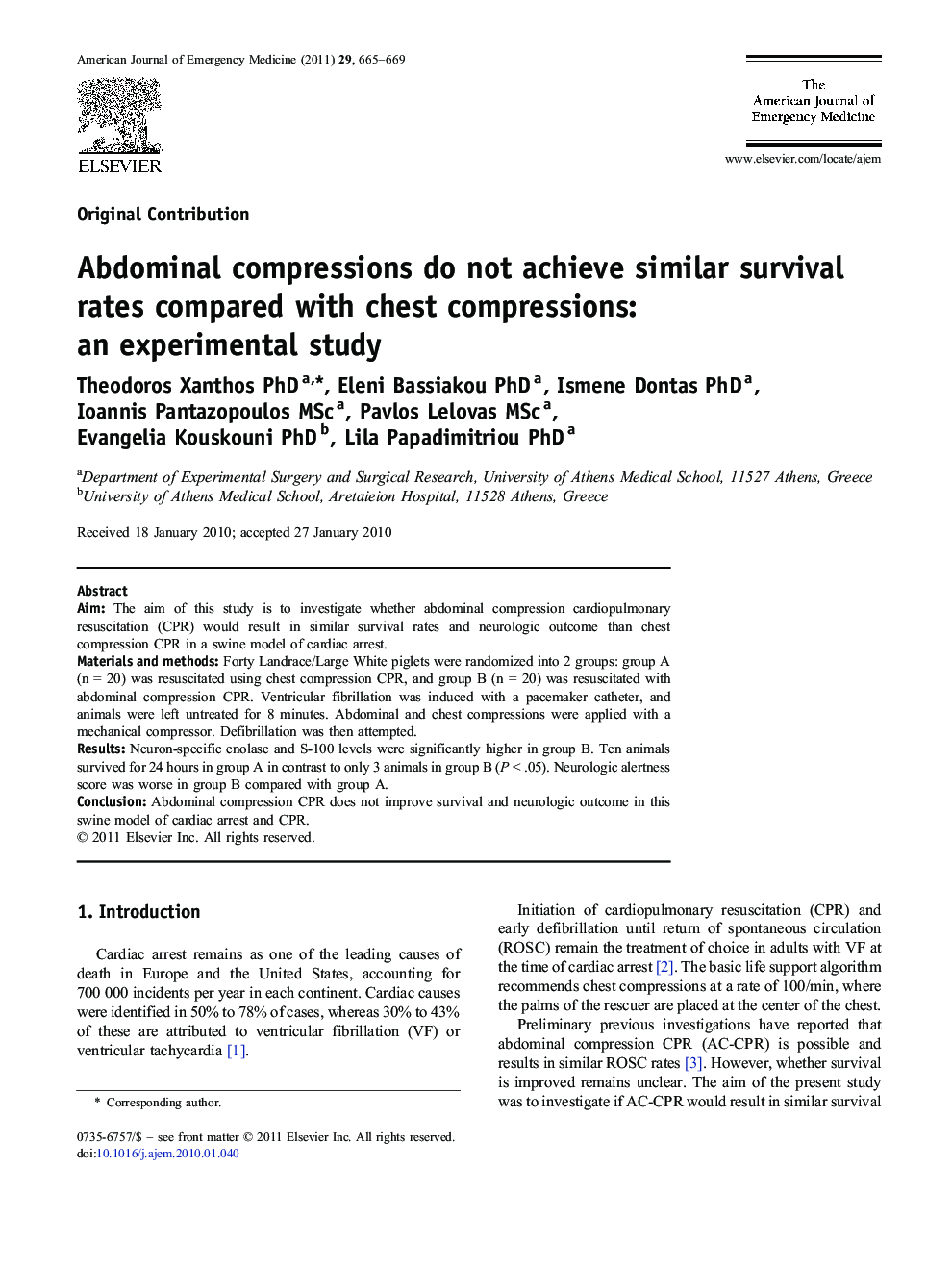| کد مقاله | کد نشریه | سال انتشار | مقاله انگلیسی | نسخه تمام متن |
|---|---|---|---|---|
| 3225398 | 1588147 | 2011 | 5 صفحه PDF | دانلود رایگان |

AimThe aim of this study is to investigate whether abdominal compression cardiopulmonary resuscitation (CPR) would result in similar survival rates and neurologic outcome than chest compression CPR in a swine model of cardiac arrest.Materials and methodsForty Landrace/Large White piglets were randomized into 2 groups: group A (n = 20) was resuscitated using chest compression CPR, and group B (n = 20) was resuscitated with abdominal compression CPR. Ventricular fibrillation was induced with a pacemaker catheter, and animals were left untreated for 8 minutes. Abdominal and chest compressions were applied with a mechanical compressor. Defibrillation was then attempted.ResultsNeuron-specific enolase and S-100 levels were significantly higher in group B. Ten animals survived for 24 hours in group A in contrast to only 3 animals in group B (P < .05). Neurologic alertness score was worse in group B compared with group A.ConclusionAbdominal compression CPR does not improve survival and neurologic outcome in this swine model of cardiac arrest and CPR.
Journal: The American Journal of Emergency Medicine - Volume 29, Issue 6, July 2011, Pages 665–669